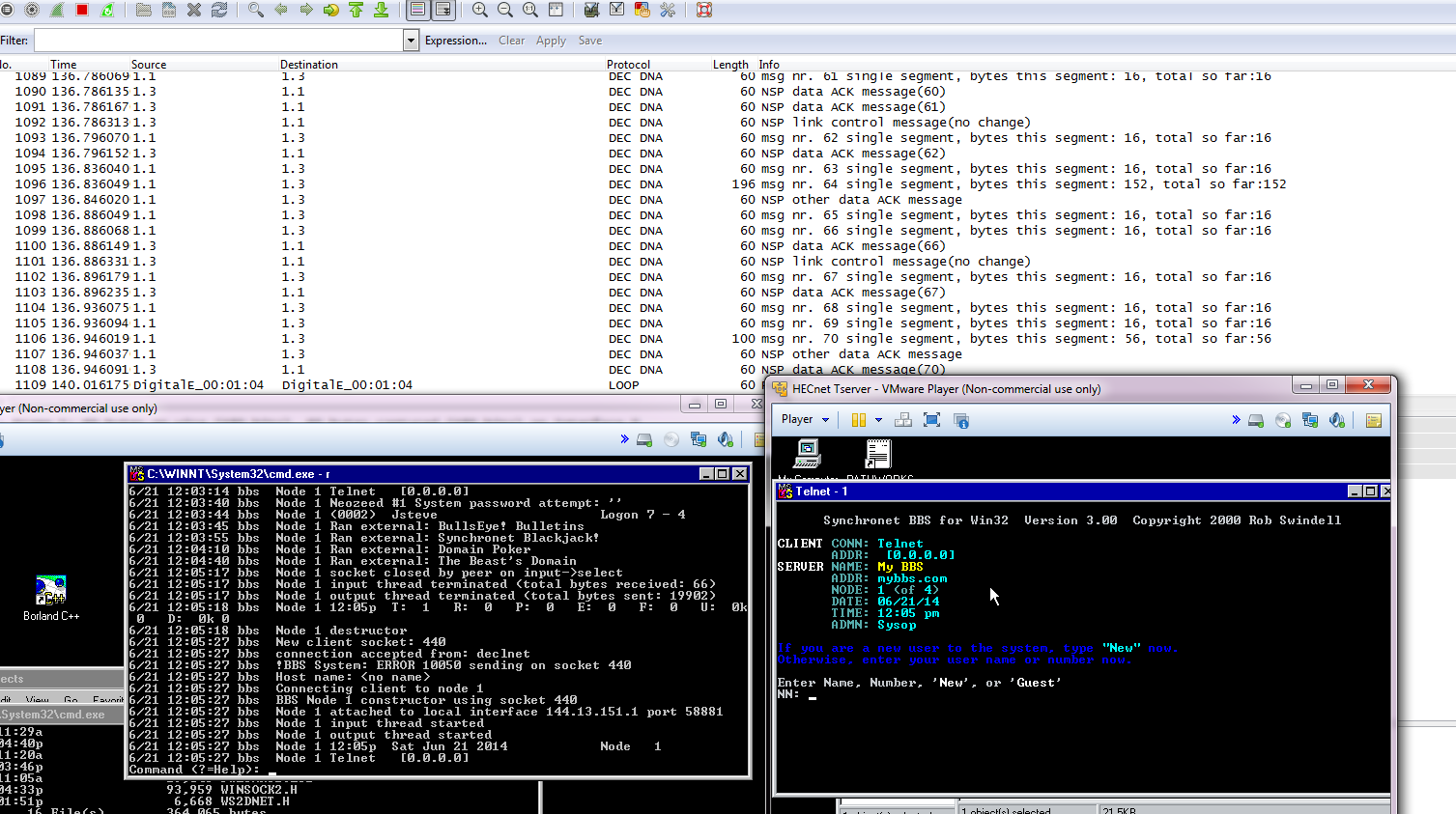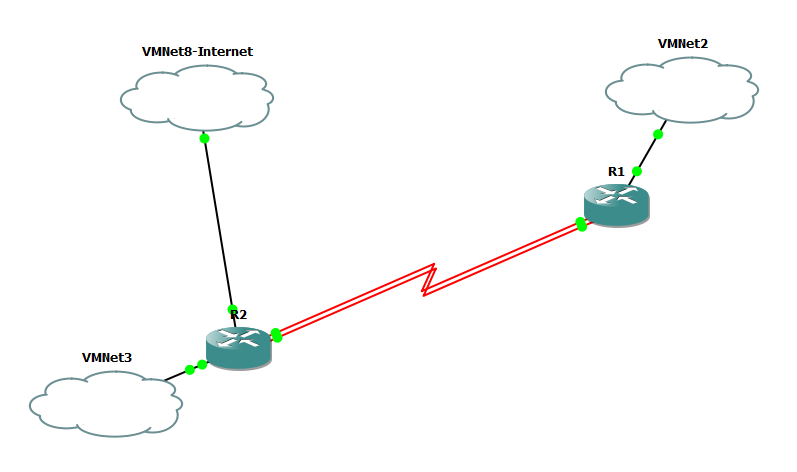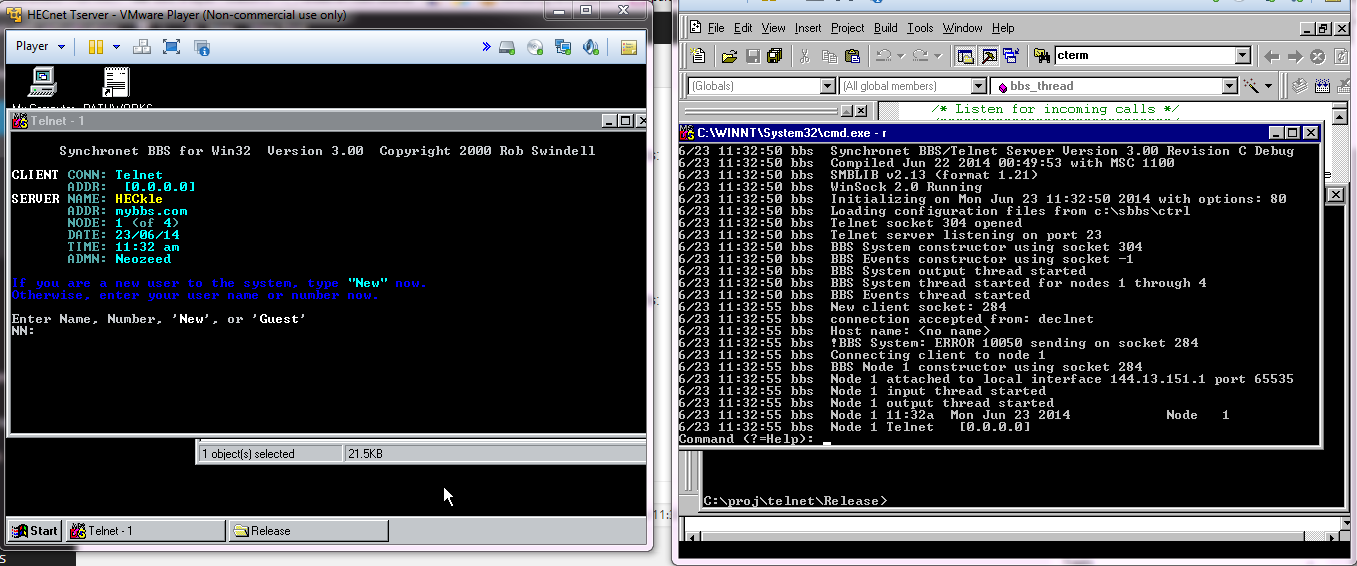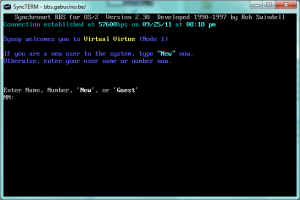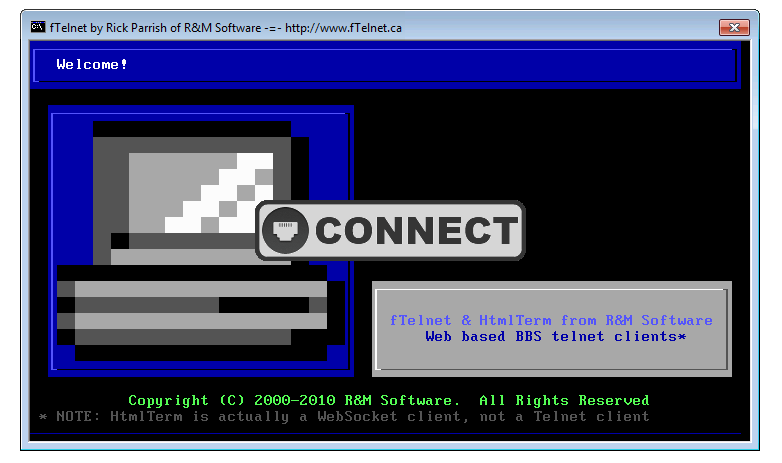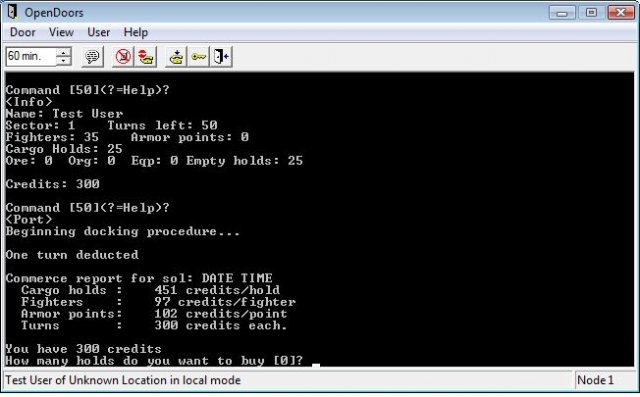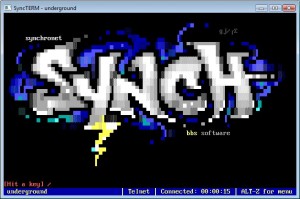A bbs over decnet!
I found a simple c server and client program that was ported to decnet. Â And it was easy enough to follow I thought I’d try something fun. Â So I took Synchronet 3.00c and started to identify the winsock tcpip portions and then slowly alter them to either stubs or being more decnet friendly.
Surprisingly this wasn’t so hard.
The hard part is that decnet doesn’t have a telnet like protocol, Â and I don’t have enough patience to try to reverse how ctermd works, so with a lot of searching I found a semi simple telnet client and mostly got it running on decnet. Â Right now I have issues resolving address, Â so it is hardcoded.
I have to admit it was pretty cool to see the first connection, Â even though it aborted when it couldn’t figure out my ip address. Â I made some more changes, and it worked!!
The next step was to fire up gns3 and build a simple 2 area decnet network and see if a NT box from area one could connect to a bbs in area two. Â And with a few false starts I finally got a working multi area network (decnet isn’t like tcpip!!) This document on cisco’s site was invaluable.
As you can see this is pretty simple. Â I wanted two serial connections so I could run DECnet on one serial connection, and TCP/IP on the other. Â This way I could shut down the TCP/IP connection to ensure my conversation was 100% over DECnet.
R1:
decnet routing iv-prime 1.1
decnet node-type area
!
interface FastEthernet0/0
ip address 192.168.0.1 255.255.255.0
duplex auto
speed auto
decnet cost 20
!
interface Serial1/0
no ip address
decnet cost 20
serial restart-delay 0
!
interface Serial1/1
ip address 10.5.0.1 255.255.255.252
serial restart-delay 0
!
router rip
network 10.0.0.0
network 192.168.0.0
 And R2:
decnet routing iv-prime 2.1
decnet node-type area
!
interface FastEthernet0/0
ip address 192.168.2.1 255.255.255.0
duplex auto
speed auto
decnet cost 10
!
interface FastEthernet0/1
ip address dhcp
duplex auto
speed auto
!
interface Serial1/0
no ip address
decnet cost 10
serial restart-delay 0
!
interface Serial1/1
ip address 10.5.0.2 255.255.255.252
serial restart-delay 0
!
router rip
redistribute static
network 10.0.0.0
network 192.168.2.0
 As you can see the configuration is pretty simple.  I went with RIP because it’s a small network, and I only need a few routes.  EIRP, OSPF and friends are just pure overkill.  And recall VMNet8 is the NAT interface provided by VMWare Player.
Checking output from the routers, shows that DECnet is routing, and that I can ping both of my test NT boxes:
R1#show decnet route
Area Cost Hops Next Hop to Node Expires Prio
*1 0 0 (Local) -> 1.1
*2 20 1 Serial1/0 -> 2.1 44 64 A+
Node Cost Hops Next Hop to Node Expires Prio
*(Area) 0 0 (Local) -> 1.1
*1.1 0 0 (Local) -> 1.1
*1.3 20 1 FastEthernet0/0 -> 1.3 65
R1#ping decnet 1.3
Type escape sequence to abort.
Sending 5, 100-byte DECnet echos to atg 0 area.node 1.3, timeout is 5 seconds:
!!!!!
Success rate is 100 percent (5/5), round-trip min/avg/max = 4/7/12 ms
R1#ping decnet 2.5
Type escape sequence to abort.
Sending 5, 100-byte DECnet echos to atg 0 area.node 2.5, timeout is 5 seconds:
!!!!!
Success rate is 100 percent (5/5), round-trip min/avg/max = 12/34/60 ms
R1#
 Everything is looking good! I fired up my DECnet telnet and success!!
Anyone crazy enough to want it can find the BBS on sourceforge, along with the telnet client.

